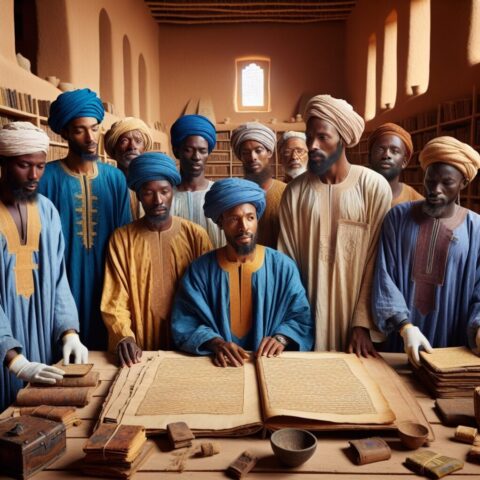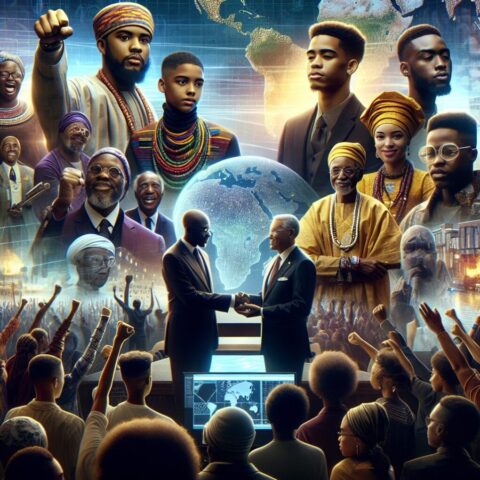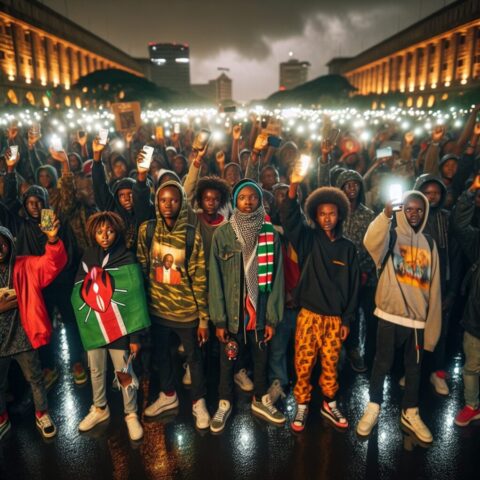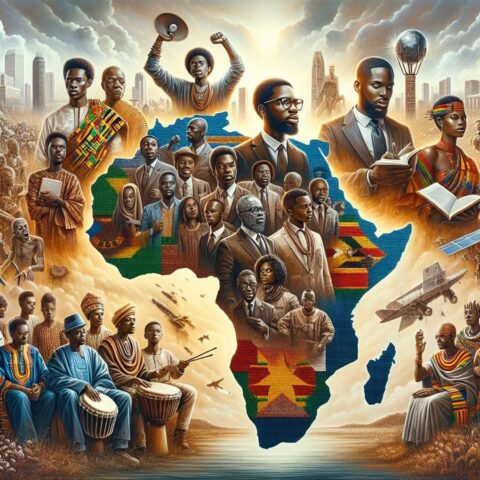They Logged On, They Showed Up: Kenya’s Gen Z Just Made a President Blink
Opening Notes, A Street That Felt Like a Pulse
Nairobi is a city that hums. Matatus shout, boda bodas weave, and market stalls brew a low thrum that never really sleeps. In late June 2024 that hum sharpened into a rhythm you could feel behind your ribcage. The beat was collective, fast, and unafraid. Kenya’s Gen Z did not wait for anyone to hand them a script. They wrote their own, then they read it aloud from the sidewalks to the steps of Parliament. A tax-heavy Finance Bill collided with a cost-of-living crisis that had turned groceries into a math problem and power bills into heartburn. The result was not just protest, it was clarity. In the digital era, a phone can be a printing press, a radio tower, a first aid station, and a shield. This time, it was all of that, and something more. It was a promise that if you ignored a whole generation, they would show up at your door.
The Spark, When Feeds Became Streets
It began with the Finance Bill, a slate of new taxes and levies introduced as Kenya wrestled with public debt and inflation. People were already counting coins at the kiosk. Households reported skipping protein, delaying clinic visits, negotiating school fees like a payment plan with time itself. Health and economics are intimate partners. When money tightens, stress hormones rise, sleep frays, blood pressure ticks up, and mental health strains. The World Health Organization has long linked economic shocks to spikes in anxiety, depression, and cardiovascular risk, and the research literature is clear that financial insecurity travels through bodies as much as budgets. It was no surprise that the bill did not land as a policy memo. It landed as an ache.
Reuters and the Associated Press documented how the protest wave took shape in June and July 2024. The first sparks were not in smoky back rooms, they were in X Spaces and on TikTok streams. Influencers, student groups, junior developers, young reporters, and a swarm of people who had never filed a parade permit or registered a political party began sharing QR codes for legal aid funds, open documents for supply runs, and links to live streams. These were not the rehearsed rallies of the past. They were agile, leaderless, and somewhat allergic to grandstanding. They were also unmistakably public. Hashtags became meeting points. Feeds became streets.
The Organizers With No Chairperson, Still Everyone Had a Job
Decentralization sounds like a buzzword until you see a med kit passed hand to hand in a tear-gassed alley. There was no single spokesperson, no charismatic figure to bargain in a closed office. There was a coordinated mesh of roles that looked less like a party and more like an open source project. Volunteer lawyers staffed helplines and monitored police stations. Medics, many still in training, set up mobile triage zones with gauze and saline and the kind of steady voice that keeps someone’s breath from hitching. Logistics teams moved water, masks, and energy bars through Telegram channels and shared spreadsheets. Creators did not just post memes, they posted posters, routes, and safety checklists that updated in real time.
A story brings it into focus. Meet Amina, 23, a design student in Nairobi’s South B. She is the kind of person who color codes her grocery list, who sketches logos on napkins and cannot let a crooked sign go unedited. She did not raise a placard on day one. She built a visual hub that turned dense budget lines into clean, clickable cards. She wrote alt text for every image so the movement’s message could be read by screen readers. Her father drives a matatu and her mother is a nurse. In their WhatsApp family group the Finance Bill was not a debate club, it was a spreadsheet of costs. When the first march swelled toward town, Amina was at her desk, double checking QR codes and font weights. When she finally joined the crowd, she recognized her own graphics held high over the shoulders of people she had never met. No chairperson had assigned her this role. The work simply asked to be done.
The Turning Point, Parliament’s Steps and a Nation’s Breath
Then the day arrived when the city bristled. Outside Parliament, police fired tear gas. Later, live rounds rang out. Protesters scattered, regrouped, and did the thing that makes a democracy both fragile and strong. They stood again. Rights groups and local media reported fatalities. It ceased to be a single policy dispute and became a national reckoning. Names circulated with urgent tenderness as people remembered friends who never made it home. Lament met outrage. The geography of protest widened. Nairobi was not alone. Cities across Kenya lifted the chorus. Reuters and AP, along with Kenyan newsrooms, documented the scale and the shock.
Brian was there that day. He is 25, a clinical officer in internship, the kid who always loved biology lab. He had a habit of humming under his breath when concentrating. On the street, he hummed a tune his grandmother sang while he wrapped a bandage around a stranger’s forearm. He had scrawled his phone number on his forearm in case he was taken in. He wore swimming goggles because they were cheap and the hardware store near his bedsitter had run out of safety glasses. The young woman he treated asked if her hand would scar. He looked at the small gash and told her the truth, a thin line, probably, but it would tell a story about a day when she chose to be counted. He told her to keep it clean, to breathe, to drink water. She laughed through tears and said, you sound like my mom.
Power Blinks, A Withdrawal and a Cabinet Falls
The pressure climbed and at last the state reacted. President William Ruto withdrew the Finance Bill, a sharp turn documented by Reuters in late June 2024. It did not stop there. In July, he dismissed his cabinet and promised austerity and a new conversation with the public. Whether one reads the move as principled or tactical, it carried a simple lesson about power in the digital city. There is no guarantee that logging on will bend policy. There is proof, in this case, that it can. People organized without a hierarchy, they held the line in the face of escalating force, they kept receipts, they broadcast. The old calculus that assumed youth would vent online and then disengage met a counterexample. Young Kenyans logged on, they showed up, they did not blink. The presidency did.
Beyond Tribe, Beyond Fear, A Coalition That Refused the Old Script
For decades Kenyan politics has been haunted by the language of ethnic patronage. Loyalties calcified around surnames and provinces. This generation was raised on a different diet. They speak the grammar of accountability. Demands that surged on Kenyan hashtags did not revolve around clan or region. They focused on public debt transparency, on a budget that aligned with social services and not spectacle, on police reform that placed human rights above political expedience. A cross ethnic coalition took shape precisely because it refused to be reduced to identity. It did not deny identity, it demoted it in the hierarchy of civic priorities.
When the chants rose, the cleverness was not just comic relief. It was a civilizing force. Witty placards punctured fear. Laughter unclenched the jaw. It inserted oxygen into a conversation that had been held hostage by grim calculations. Culture became a method, not an accessory. Across Nairobi, Mombasa, Kisumu, Eldoret, and Nakuru, a youth cohort built a lexicon that was playful, data literate, and ethically serious.
Memes as Megaphones, The Speed of Culture Outruns the Press Conference
Something profound happened in the arena where code meets culture. Infographics that traced debt servicing costs, tax incidence, and line items for presidential travel bounced between group chats and public feeds. Satirical videos turned bureaucratic euphemisms into punchlines that taught policy better than a pamphlet. Protest art did not wait for a gallery, it went sidewalk to cloud. A generation fluent in visual grammar made the arcane legible within seconds. The government’s official press briefings felt labored in comparison. The narrative did not belong to the podium. It lived in the scroll.
Info War Terrain, Documentation, Throttling Risks, and the Long Memory of the Internet
No modern movement breathes clean air. Platforms can be inverted into surveillance tools. Misinformation thrives in fog. There were reports and fears of internet throttling in moments of acute tension, a tactic documented in other countries and monitored by digital rights organizations. Doxxing, smear campaigns, and false flags circulated. The response was not surrender to cynicism. It was documentation with an eye toward courts and commissions. People saved videos with time stamps. They posted badge numbers when they could see them. They cross checked rumors and leaned on reputable fact checking outlets.
When a government realizes it cannot control the street, some turn to controlling the stream. The movement’s answer was to make redundancy a habit. Independent journalists archived footage. Legal groups logged arrests. The long memory of the internet is sometimes a menace, often a relief. In this case, it was a lifeline. The heart of it was not techno fetishism. It was care. To witness is to care.
The Civic Tech Stack, Tools That Felt Like Institutions
It is useful to name the elements, not to script playbooks, but to understand what modern civil society can look like in motion.
- Budget visualizers turned parliamentary PDF dumps into interactive charts ordinary people could parse in a few swipes.
- Freedom of information requests, once the province of NGOs alone, became a button ordinary people learned to click, a habit rather than a hail mary.
- Fact check bots and public interest newsrooms accelerated response time to rumors, which is critical because in crisis, truth’s half life shortens.
- Community legal hotlines and pro bono networks treated arrests not as isolated tragedies, but as data points with a defense grid.
None of this replaced the physical courage that bodies on the street require. It backed it up with a scaffolding that felt, in a strange way, like institution building. The protest did not merely say no. It simulated a more responsive state in miniature, a thing made of code, grit, and grace.
Ripples Across the Region, Patterns Without Blueprints
Observers in other African capitals took note. From Accra to Kampala to Lagos, urban youth are familiar with the scrape of austerity and the sting of unaccountable power. Each country has its own circuitry, its own constitutional fabric, its own red lines you cross at your peril. It is not responsible to cut and paste strategies across borders. What can travel, without prescribing tactics to any particular group, are patterns. Digital networks can support legal care. Open data tools can make budgets legible. Humor can leaven fear. Documenting abuses, carefully and lawfully, can matter months later in court. Urban planners and mental health workers can be allies when streets become sites of stress. Philanthropy can remember that attention spans of donors are shorter than the reform arcs being attempted. These are observations, not instructions, and they come with a reminder. Sustainable change is made in institutions as much as in intersections.
What Comes Next, The Watch List
Avoiding repetition demands staying fresh, so this time the story does not end with the high of a policy U turn. It settles into the discipline of follow up. The watch list is not glamorous, but it is where civic maturity shows.
- Independent audits of public spending and debt agreements, with plain language summaries.
- Police accountability with timelines, not just promises, including transparent investigations into use of force and reparations where warranted.
- A credible public conversation about debt relief at regional and global levels, grounded in the real human costs of austerity.
- A budget culture that centers health, education, climate adaptation, and job creation, backed by evidence rather than optics.
- Legal reforms that protect the right to assemble and to document public events without intimidation, with specific safeguards for journalists and medics.
- A digital rights framework that resists throttling and defends privacy, balanced with lawful safeguards against incitement and hate speech.
- Civic education that demystifies how committees, courts, and commissions actually work, so oversight feels like a skill, not a sermon.
The Human Body in the Body Politic, A Health Note
Cost of living is not a slogan. It is blood pressure at 2 a.m., it is a parent rationing insulin, it is a graduate postponing a dental visit because the job did not materialize. Movements that take these textures seriously are not simply performative. They act like public health campaigns with soul. They align with research that shows how economic strain translates into morbidity, how social cohesion buffers stress, and how participation in community can improve mental health outcomes. That is why marches that provide water, shade, and care stations feel different. They are not only theatrical. They are therapeutic, for a day and sometimes for a lifetime.
A Story Worth Keeping, Amina and Brian
Weeks later, Amina met Brian at a small café near the courthouse. They recognized each other from a volunteer spreadsheet and a grainy livestream. She brought him a sketch, a fine line turned into a poster about the right to assemble. He lifted his sleeve and showed her a faint scar where a canister clip had nicked him. They laughed, then quieted. He asked her if she still heard the pops at night. She said sometimes, then she said she had started listening to slow jazz before bed, a trick her mom had taught her from night shifts on the ward. He said he had started running again, short loops around Uhuru Park, lungs learning to trust air. They were not heroes. They were citizens. That is the point.
How This Differs From Our Usual Beat
Readers of this space know we often dwell on the intimate terrains of health, relationships, and the personal rituals that help a body feel like home. This piece lives in the city square instead of the bedroom or the clinic. Yet the themes are cousins. Consent, trust, care, and truth are not confined to romance or diet. They animate the body politic as surely as they animate your nervous system. If earlier pieces on nutrition and sexual wellbeing asked how we inhabit our single lives with integrity, this one asks how we inhabit our shared life with the same.
Why It Matters That a President Blinked
Skeptics will say a withdrawal is a pause, not a pivot. They will point to the churn of politics, to the way momentum is packaged and sold, to the next crisis already on the calendar. They are not wrong about attention. They may be wrong about memory. Kenya’s Gen Z now knows something in their bones that cannot be unfelt. When they align information, care, humor, and courage, they can move the center of gravity. The lesson is not that every bill can be killed. It is that policy is not a monologue. It is a relationship.
What’s Next, The Generational Project
It is easy to fixate on elections as the main arena. They are crucial, but they are not everything. Before the next cycle, the generational project is quieter. It is embedding openness in civil service workflows. It is teaching budget literacy in high schools. It is normalizing police reform as a governance issue rather than an anti police posture. It is pushing for debt transparency as a patriotic duty. It is insisting that Parliament’s livestream is as sacred as a campaign rally. It is investing in counseling for communities that saw violence, because trauma unattended tends to repeat itself.
The ask is simple. Keep the receipts. Keep the humor. Keep the heart.
If you felt something stir as you watched Kenya’s young people log on and show up, what would it look like to carry that feeling into your next conversation, your next meeting, your next quiet act of care?
References
- Reuters. Kenya protests prompt President Ruto to withdraw Finance Bill after deadly clashes. June 2024.
- Reuters. President Ruto dismisses cabinet, promises austerity and dialogue following protests. July 2024.
- Associated Press. Kenya’s youth-led protests swell across cities as rights groups report fatalities and arrests. June to July 2024.
- Kenya National Commission on Human Rights. Statements and updates on casualties, arrests, and rights violations during June to July 2024 protests.
- Amnesty International Kenya and Kenya Human Rights Commission. Joint updates on use of force, arrests, and legal support during protests, 2024.
- ARTICLE 19 Eastern Africa and Access Now. Reporting on internet throttling risks and digital rights in East Africa, 2024.
- World Health Organization. Mental health and economic crises, impact of financial stress on health outcomes, various reports.
- The Lancet. Economic downturns and population health, associations with cardiovascular and mental health outcomes, multiple studies.
- Nation Media Group, The Standard, Citizen Digital. Local reporting on parliamentary proceedings, protest routes, and civic responses, June to July 2024.









This was beautiful Admin. Thank you for your reflections.
Bosphorus guided tour Our guide answered all our questions patiently. http://sandrazimmermann.de/?p=120640
I really enjoy looking through on this internet site, it has got wonderful blog posts. “For Brutus is an honourable man So are they all, all honourable men.” by William Shakespeare.
Attempt to identify the letters in the foodle game; it will automatically update with new words each day.
I have not checked in here for a while because I thought it was getting boring, but the last few posts are good quality so I guess I will add you back to my daily bloglist. You deserve it my friend 🙂
It’s a pity you don’t have a donate button! I’d certainly donate to this excellent blog! I suppose for now i’ll settle for bookmarking and adding your RSS feed to my Google account. I look forward to brand new updates and will talk about this website with my Facebook group. Talk soon!
I’m really enjoying the design and layout of your blog. It’s a very easy on the eyes which makes it much more enjoyable for me to come here and visit more often. Did you hire out a developer to create your theme? Fantastic work!
**mind vault**
mind vault is a premium cognitive support formula created for adults 45+. It’s thoughtfully designed to help maintain clear thinking
**glpro**
glpro is a natural dietary supplement designed to promote balanced blood sugar levels and curb sugar cravings.
**sugarmute**
sugarmute is a science-guided nutritional supplement created to help maintain balanced blood sugar while supporting steady energy and mental clarity.
**vittaburn**
vittaburn is a liquid dietary supplement formulated to support healthy weight reduction by increasing metabolic rate, reducing hunger, and promoting fat loss.
**synaptigen**
synaptigen is a next-generation brain support supplement that blends natural nootropics, adaptogens
**glucore**
glucore is a nutritional supplement that is given to patients daily to assist in maintaining healthy blood sugar and metabolic rates.
**prodentim**
prodentim an advanced probiotic formulation designed to support exceptional oral hygiene while fortifying teeth and gums.
**nitric boost**
nitric boost is a dietary formula crafted to enhance vitality and promote overall well-being.
**wildgut**
wildgutis a precision-crafted nutritional blend designed to nurture your dog’s digestive tract.
**sleeplean**
sleeplean is a US-trusted, naturally focused nighttime support formula that helps your body burn fat while you rest.
**mitolyn**
mitolyn a nature-inspired supplement crafted to elevate metabolic activity and support sustainable weight management.
**yusleep**
yusleep is a gentle, nano-enhanced nightly blend designed to help you drift off quickly, stay asleep longer, and wake feeling clear.
**zencortex**
zencortex contains only the natural ingredients that are effective in supporting incredible hearing naturally.
**breathe**
breathe is a plant-powered tincture crafted to promote lung performance and enhance your breathing quality.
**prostadine**
prostadine is a next-generation prostate support formula designed to help maintain, restore, and enhance optimal male prostate performance.
**pineal xt**
pinealxt is a revolutionary supplement that promotes proper pineal gland function and energy levels to support healthy body function.
**energeia**
energeia is the first and only recipe that targets the root cause of stubborn belly fat and Deadly visceral fat.
**prostabliss**
prostabliss is a carefully developed dietary formula aimed at nurturing prostate vitality and improving urinary comfort.
**boostaro**
boostaro is a specially crafted dietary supplement for men who want to elevate their overall health and vitality.
**potentstream**
potentstream is engineered to promote prostate well-being by counteracting the residue that can build up from hard-water minerals within the urinary tract.
**hepatoburn**
hepatoburn is a premium nutritional formula designed to enhance liver function, boost metabolism, and support natural fat breakdown.
**hepato burn**
hepato burn is a potent, plant-based formula created to promote optimal liver performance and naturally stimulate fat-burning mechanisms.
**flowforce max**
flowforce max delivers a forward-thinking, plant-focused way to support prostate health—while also helping maintain everyday energy, libido, and overall vitality.
**neuro genica**
neuro genica is a dietary supplement formulated to support nerve health and ease discomfort associated with neuropathy.
**cellufend**
cellufend is a natural supplement developed to support balanced blood sugar levels through a blend of botanical extracts and essential nutrients.
**prodentim**
prodentim is a forward-thinking oral wellness blend crafted to nurture and maintain a balanced mouth microbiome.
**revitag**
revitag is a daily skin-support formula created to promote a healthy complexion and visibly diminish the appearance of skin tags.
**memory lift**
memory lift is an innovative dietary formula designed to naturally nurture brain wellness and sharpen cognitive performance.
This is a great article, i am simply a fun, keep up the good work, just finish reading from https://websiteerstellenlassenbamberg.de// and their work is fantastic. i will be checking your content again if you make next update or post. Thank you
Thanks , I’ve just been looking for info about this topic for ages and yours is the greatest I’ve discovered till now. But, what about the bottom line? Are you sure about the source?
**hepatoburn**
hepatoburn is a potent, plant-based formula created to promote optimal liver performance and naturally stimulate fat-burning mechanisms.
My developer is trying to convince me to move to .net from PHP. I have always disliked the idea because of the expenses. But he’s tryiong none the less. I’ve been using Movable-type on a number of websites for about a year and am nervous about switching to another platform. I have heard good things about blogengine.net. Is there a way I can import all my wordpress posts into it? Any help would be greatly appreciated!